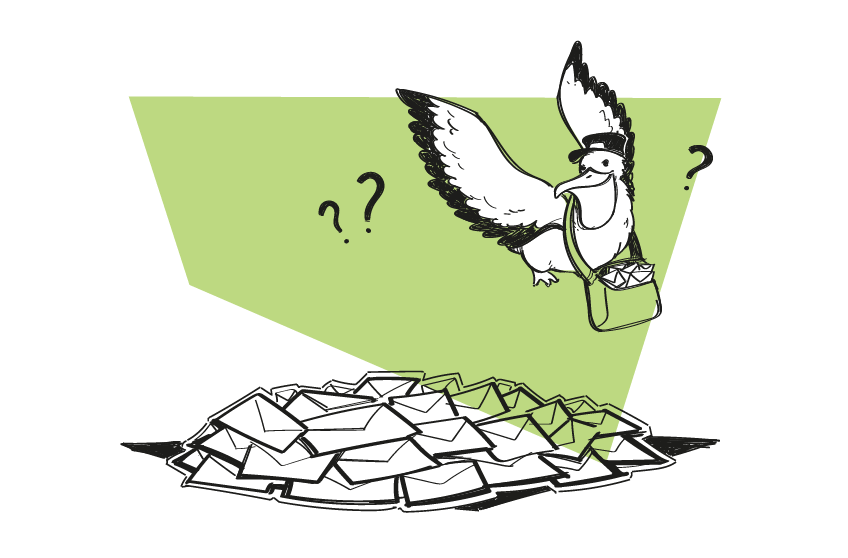In the ever-evolving landscape of B2B SaaS, where every email holds the potential for new opportunities, the art of the follow-up email reigns supreme. Beyond the initial outreach, the follow-up strategies determine the success of connecting with potential clients. In this article, we delve into effective techniques that strike the perfect balance between persistence and avoiding annoyance, ensuring that your cold emails leave a lasting impression.
How Many Times Should You Follow-up?
Determining the optimal number of follow-ups with prospects depends on several factors. Some of them are industry norms, prospect engagement, and your follow-up sequence. Set a structured follow-up process, monitor engagement signals, customize your approach, and know when to pivot. Establishing a follow-up sequence ensures consistency and avoids missing out on potential opportunities.
Consider industry best practices to gauge appropriate follow-up frequencies. Monitor prospect engagement signals to determine their level of interest. Customize your follow-up strategies based on their behavior and personalize your messaging. However, know when to calibrate your efforts if there is no response or clear indications of interest. Striking the right balance between persistence and respect will maximize your chances of success.
Things You Must Consider While Forming Your Follow-Up Strategies
Here’s our list of parameters involved in the perfect follow-up sequence creation.
Timing is Key
Timely follow-ups are crucial to keep your conversation alive. Send your first follow-up within 2-3 days of the initial email. Research shows that follow-up emails sent on the second day after the initial contact have a 30% higher response rate than those sent on the first day. Be prompt but not overly aggressive. You demonstrate your professionalism and interest in engaging with the recipient this way.
Personalization Matters
Make your follow-up emails personalized and relevant to each recipient. Personalized emails are more likely to stand out amidst a sea of generic follow-ups. Tailor each follow-up email to the recipient by referencing specific details from your previous conversation or mentioning their business challenges. By showing that you have taken the time to understand their unique needs, you increase the likelihood of capturing their attention.
Example: “Hi [Name], I hope you had a chance to review my previous email. Given your interest in streamlining sales operations, I wanted to share a case study highlighting how our B2B SaaS solution helped a similar company achieve a 40% increase in conversion rates.”
Value-Driven Approach
Focus on providing value in your follow-up strategies for cold emails. Share valuable resources, insights, or industry trends that could benefit the recipient. Demonstrating your expertise and commitment to their success, you position yourself as a trusted partner rather than a pushy salesperson.
Example: “Hello [Name], I recently came across a report on industry trends that I believe could be valuable for your company’s growth strategy. Would you be interested in receiving a copy?”
Use Clear and Compelling Subject Lines
Craft subject lines that grab attention and communicate the purpose of your follow-up email. A subject line like “Quick follow-up on our previous discussion” lacks impact. Instead, try something like
“3 strategies to boost your B2B SaaS sales results.”
“Unlock Your B2B SaaS Growth Potential: Exclusive Offer Inside!”
“Revolutionize Your Sales Strategy with Our B2B SaaS Solution”
“Don’t Miss Out on the Latest Industry Insights and Trends for B2B SaaS Success”
You can leverage the ‘missing out’ factor in subject lines very well.
Keep It Concise
Ensure your follow-up strategies for cold emails includes being brief and to the point. Most recipients have limited time, so a long-winded email may deter them from responding. Stick to the most essential information and make it easy for them to understand your message quickly. Conciseness demonstrates respect for their time and increases the likelihood of a response. Here are examples of wrong and right emails for your b2b SaaS company.
Example of a non-concise email:
Subject: “Reaching out to discuss how our B2B SaaS solution can transform your business operations and drive revenue growth through streamlined processes and enhanced customer engagement.”
Its concise form would be:
Subject: “Transform Your Business with Our B2B SaaS Solution”
Also Read: Mastering The Art Of Cold Emailing: Best Practices And Strategies
Add a Sense of Urgency
Create a sense of urgency in your follow-up emails. Communicate the value of your offer and emphasize any limited-time promotions or upcoming deadlines. These follow-up strategies can help motivate prospects to take action sooner rather than later.
Example: “Hi [Name], just a friendly reminder that our exclusive early-bird discount for our B2B SaaS conference ends this Friday. Don’t miss the opportunity to network with industry leaders and gain invaluable insights.”
Vary Your Follow-Up Methods
Don’t rely solely on email for your follow-up strategies. Mix up your approach by leveraging other communication channels like LinkedIn, phone calls, or direct mail. By diversifying your methods, you increase the likelihood of catching your prospect’s attention. Multiple methods also ensure that prospects receive engagement in ways that suit their preferences.
Automated Follow-Up Sequences
Consider using email automation tools to set up follow-up sequences. These tools allow you to schedule and personalize a series of follow-up emails based on recipient actions or inaction. Automated sequences can help you stay consistent and save time, ensuring no potential opportunity slips through the cracks.
Conclusion
Mastering the art of forming effective follow-up strategies for cold emails is essential for B2B SaaS companies. You can stay persistent without becoming annoying by applying timing, personalization, value-driven content, short subject lines, and concise messaging. Remember, every follow-up is an opportunity to demonstrate your dedication, expertise, and value to your prospects. Hence, focus on increasing the chances of converting them into loyal customers.
Follow Zohort for more updates.


